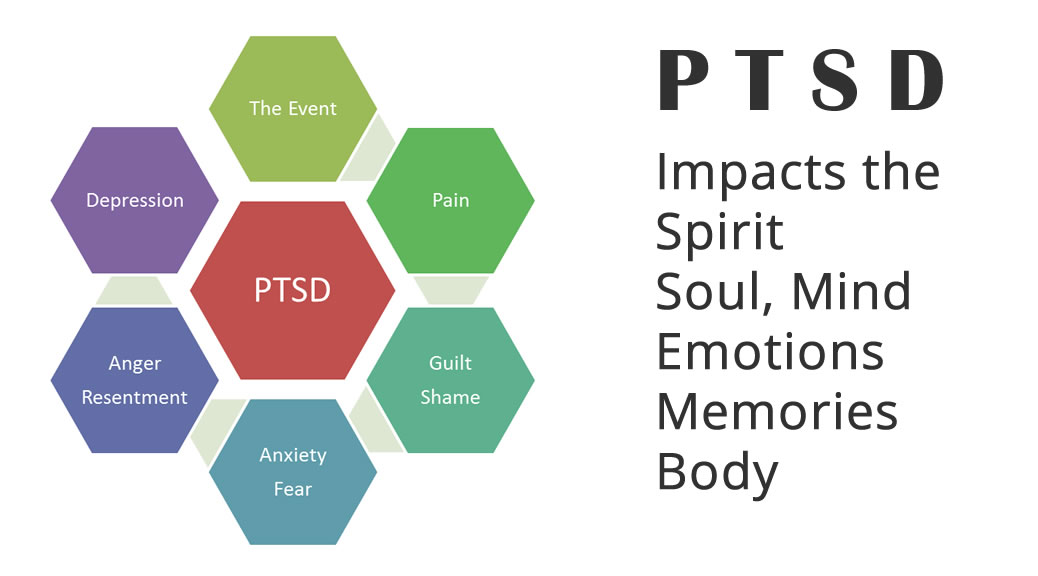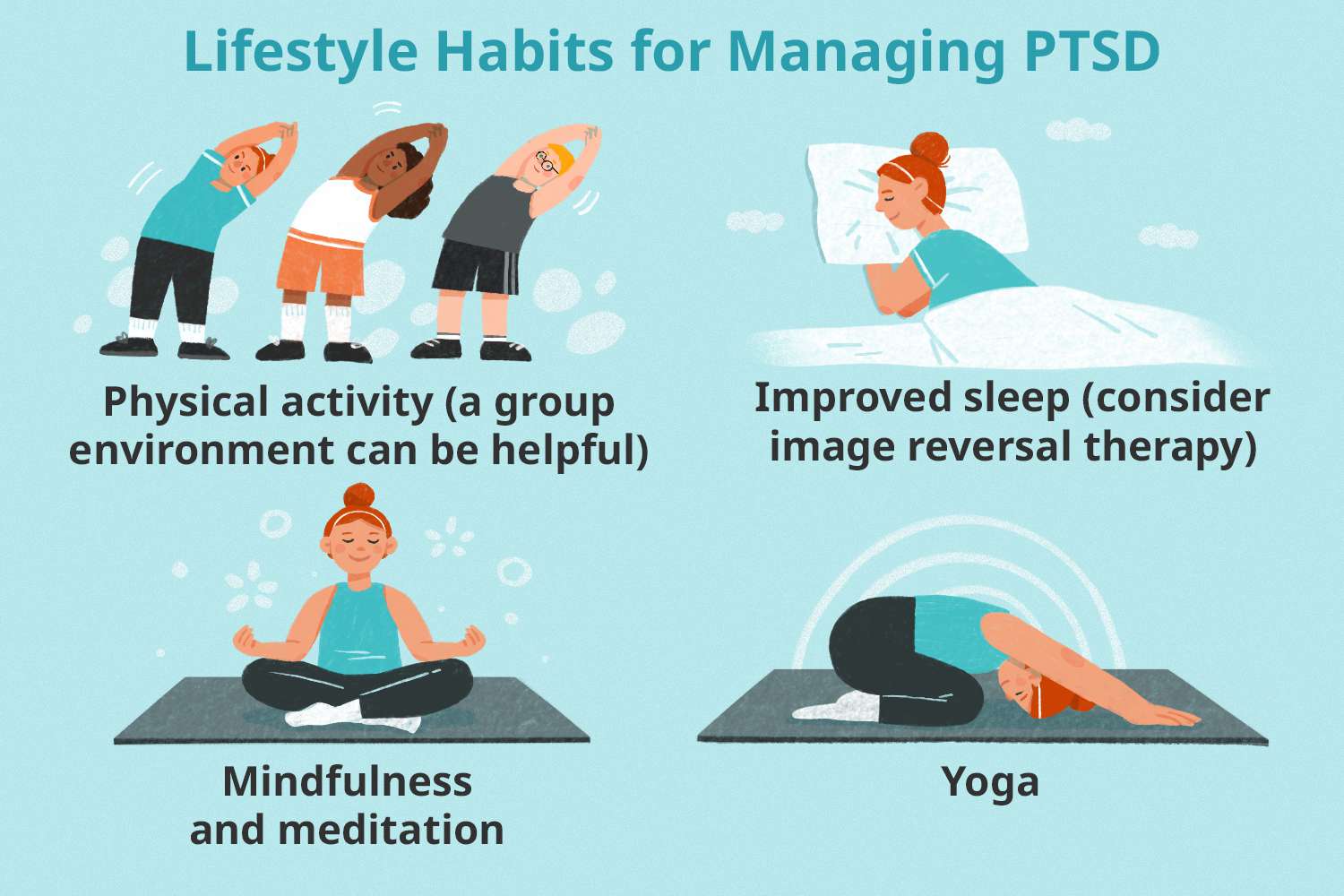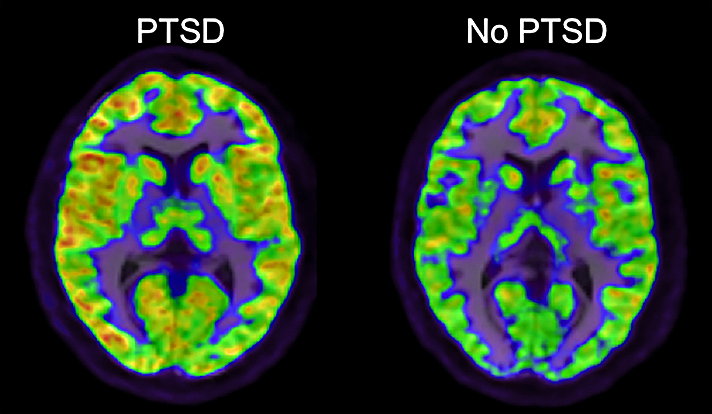Post-Traumatic Stress Disorder (PTSD) is a condition that affects individuals who have experienced or witnessed a traumatic event. The journey to recovery can vary significantly from person to person. In this article, we delve into the various treatments available for PTSD, explore whether it ever truly goes away, and examine the stages of PTSD to better understand this complex mental health condition.
Understanding The Stages Of PTSD

As individuals navigate through these early stages of post-traumatic stress disorder (PTSD), the intensity and frequency of intrusive memories often prompt the development of avoidance behaviors. In an effort to escape the distress these memories cause, individuals might isolate themselves from people, places, or activities that serve as reminders of the trauma. This avoidance, while providing temporary relief, can lead to emotional numbness and a sense of detachment from reality, exacerbating feelings of loneliness and helplessness. Furthermore, these experiences can trigger heightened arousal symptoms, such as hyper-vigilance or heightened startle responses, further complicating social interactions and daily routines. Recognizing these stages as part of the PTSD spectrum is critical, as understanding and acknowledging them can facilitate more effective interventions. It enables those suffering to seek appropriate therapies, such as cognitive behavioral therapy (CBT) or eye movement desensitization and reprocessing (EMDR), which are designed to work through and mitigate these symptoms. Ultimately, this awareness forms a foundation for rebuilding a sense of safety and control, pivotal for fostering a path toward healing and reclaiming one's life from the grips of trauma..
Avoidance And Numbing

As PTSD progresses, avoidance symptoms may develop, marking a critical shift in coping mechanisms. This stage involves steering clear of places, people, or activities that serve as reminders of the trauma, creating a complex barrier to everyday experiences. While avoidance may initially act as a protective shield, it can inadvertently lead to a withdrawal from life's vibrant tapestry and the nurturing connections that sustain emotional health. Individuals might find themselves estranged from their support networks, missing out on opportunities that could foster healing and growth. Over time, this retreat can compound feelings of isolation and exacerbate the condition, as the world becomes a landscape of potential triggers rather than a source of solace and rejuvenation. Therapeutic interventions focusing on gradual re-exposure and cognitive processing can help break this cycle, allowing individuals to rebuild a sense of safety and engagement with their surroundings, ultimately paving a path toward recovery and emotional resilience..
The Hyper-Arousal Stage

Additionally, individuals experiencing this stage may find themselves easily startled or overwhelmed by everyday situations, resulting in avoidance behaviors and social withdrawal. This constant state of alertness can strain personal and professional relationships, as loved ones may have difficulty understanding the abrupt changes in mood and behavior. Over time, these heightened reactions can also contribute to physical health issues, such as headaches, fatigue, and a weakened immune system. It is crucial for those affected to seek supportive environments and therapeutic interventions that can help them manage these symptoms, work towards calmness, and gradually re-establish a sense of safety and normalcy in their lives..
Therapeutic Interventions

Additionally, Eye Movement Desensitization and Reprocessing (EMDR) is another therapeutic approach that has shown promising results in treating PTSD. EMDR involves the patient recalling distressing memories while the therapist directs their eye movements, which is believed to help process and reduce the intensity of traumatic memories. Alongside these therapies, medications such as selective serotonin reuptake inhibitors (SSRIs) may be prescribed to help alleviate symptoms of anxiety and depression commonly associated with PTSD. The combination of these treatments is tailored to each individual's unique needs, providing a holistic approach that addresses both the emotional and physiological aspects of the disorder. Support from family and group therapy sessions can also play a crucial role in the healing process, offering a network of understanding and encouragement..
Will PTSD Ever Go Away?

Many people wonder if PTSD will ever completely disappear. While it's true that PTSD may not entirely vanish, it's important to understand that its symptoms can be significantly managed with appropriate treatment. Therapies such as cognitive-behavioral therapy, EMDR, and medications can help reduce the impact of symptoms and improve daily functioning. Additionally, support from loved ones and engaging in self-care practices can play a crucial role in the healing journey. It's entirely possible for individuals to lead fulfilling and meaningful lives even while experiencing PTSD symptoms. The key lies in receiving comprehensive care and developing coping strategies that cater to individual needs, allowing those affected to regain a sense of control and contentment in their lives..
What Does A PTSD Episode Look Like?

Understanding what a PTSD episode looks like is crucial for those affected by the disorder and for their support systems. An episode may involve feelings of panic, flashbacks, or intense emotional distress. Recognizing these symptoms can help in providing timely support. During such episodes, individuals might experience an overwhelming sense of fear or helplessness as their mind replays traumatic events. This can lead to physical symptoms such as sweating, heart palpitations, or difficulty breathing. For loved ones and caregivers, it’s important to remain calm and reassuring, offering a comforting presence without dismissing their feelings. Encouraging grounding techniques, like deep breathing or focusing on the surrounding environment, can be beneficial. Additionally, creating a safe space where the person feels secure and understood can significantly alleviate their distress. Educating oneself about PTSD and seeking professional guidance can further empower families and friends to be more effective allies in the recovery journey..
Lifestyle Changes And Coping Strategies

Engaging in regular physical activity, for instance, not only boosts endorphin levels, enhancing mood, but also provides a constructive outlet for stress and anxiety often linked with PTSD. Coupled with a balanced diet rich in nutrients, this approach nourishes the body and brain, fostering resilience against emotional triggers. Mindfulness practices, including meditation and deep-breathing exercises, further cultivate a sense of calm and presence, enabling individuals to better navigate intense emotions and reduce hyperarousal symptoms. By integrating these lifestyle changes, those with PTSD can create a supportive framework that promotes healing and enhances daily functioning, empowering them to regain control over their lives and nurture mental health..
The Role Of Family And Community Support

Family and social support are crucial pillars in the journey of overcoming PTSD, serving as a lifeline for individuals navigating the turbulent waters of trauma recovery. The encouragement and understanding provided by loved ones can make an enormous difference, offering a comforting presence that nurtures a sense of safety and belonging. When individuals battling PTSD know they are surrounded by empathetic family members and friends, they are more likely to openly share their struggles, fears, and victories. This shared journey can foster deeper connections, reinforcing the individual's sense of being supported and valued. Supportive relationships can also introduce healthier coping mechanisms and provide gentle reminders of the progress made, enhancing resilience. Furthermore, social support networks can act as a bridge to professional help, encouraging individuals to seek therapy or join support groups. Ultimately, the warmth and understanding of family and friends can illuminate the path towards healing, making the recovery process less daunting and more hopeful..
Emerging Treatments And Ongoing Research

Ongoing research continues to offer hope for more advanced treatments for PTSD. Innovations in medical science and therapy techniques aim to enhance the quality of life for those affected by PTSD, providing new avenues for recovery and management. Recent breakthroughs include the development of personalized therapy plans that integrate artificial intelligence to tailor interventions to individual needs, maximizing effectiveness. Meanwhile, emerging pharmacological approaches target the neurological underpinnings of PTSD more precisely, promising fewer side effects and improved outcomes. Additionally, advancements in virtual reality technology allow patients to engage in immersive, controlled environments where they can confront and manage trauma-related triggers safely. As researchers and clinicians collaborate across disciplines, the future of PTSD treatment looks increasingly promising, offering both renewed hope and tangible results for those seeking healing and resilience..
While PTSD is a complex and enduring condition, it is not insurmountable. Through effective treatment, understanding, and support, individuals can reclaim their lives and move towards a future that is not defined by the trauma of their past. Acknowledging the stages of PTSD and recognizing the signs of a PTSD episode can empower individuals and their support systems to take control and foster healing.


